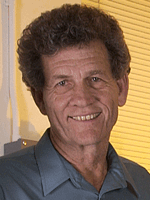Wisconsin technology powers California microgrid project
California’s Santa Rita Jail just got a little more secure this week, thanks to the completion of a $14 million “microgrid” project that gives the facility its own autonomous power supply — a feat rooted in University of Wisconsin–Madison technology.

Lasseter
California officials will formally dedicate the microgrid on Thursday, and on hand will be UW–Madison emeritus electrical and computer engineer Robert Lasseter, one of the world’s leading experts on microgrids. Lasseter has six microgrid-related patents managed by the Wisconsin Alumni Research Foundation and several companies licensing the technology are involved in the Santa Rita effort.
Microgrids are designed to operate as self-contained local electrical power grids by drawing together a combination of sources and loads, frequently including photovoltaic, wind, diesel generators and storage. One of Lasseter’s big research contributions is the development of an elegant and simple control concept that allows these different energy generators to “plug and play” into a seamless system.
“This is working out to be a spectacular project,” says Lasseter. “From a power standpoint, the jail can island itself and reconnect to the grid in a seamless manner. It will eventually have the capability of sending power back to the grid.”
While giving greater energy security to America’s fifth-largest jail has obvious value, Lasseter says microgrids have other inherent benefits. “When you bring generation closer to the end-user, you get rid of a lot of energy losses, usually around 10 percent,” he says. “The second benefit is you are able to capture and use waste heat.”
The end result could be more than double the energy efficiency of conventional utilities. Lasseter says they could also be used as a proven universal power supply (UPS) source at a fraction of the cost. Many companies needing secure power supplies, such as credit card companies, install multi-million dollar solutions for UPS security.
The microgrid work of Lasseter and others will continue in Wisconsin through the Wisconsin Energy Research Consortium (WERC). A microgrid emulator is being built into the new Wisconsin Energy Institute building scheduled to open in 2013, while UW-Milwaukee has its own functioning microgrid that employs on-site solar cells, a wind turbine and power storage.
The Department of Energy-funded Santa Rita project is led by Chevron Energy Systems and includes a number of public-private partners. Lasseter’s technology has been developed and tested through the national Consortium for Electric Reliability Technology Solutions, or CERTS. For more information, visit here.
Enjoy this story?
Read more news from the College of EngineeringSubscribe to Wisconsin Ideas
Want more stories of the Wisconsin Idea in action? Sign-up for our monthly e-newsletter highlighting how Badgers are taking their education and research beyond the boundaries of the classroom to improve lives.
